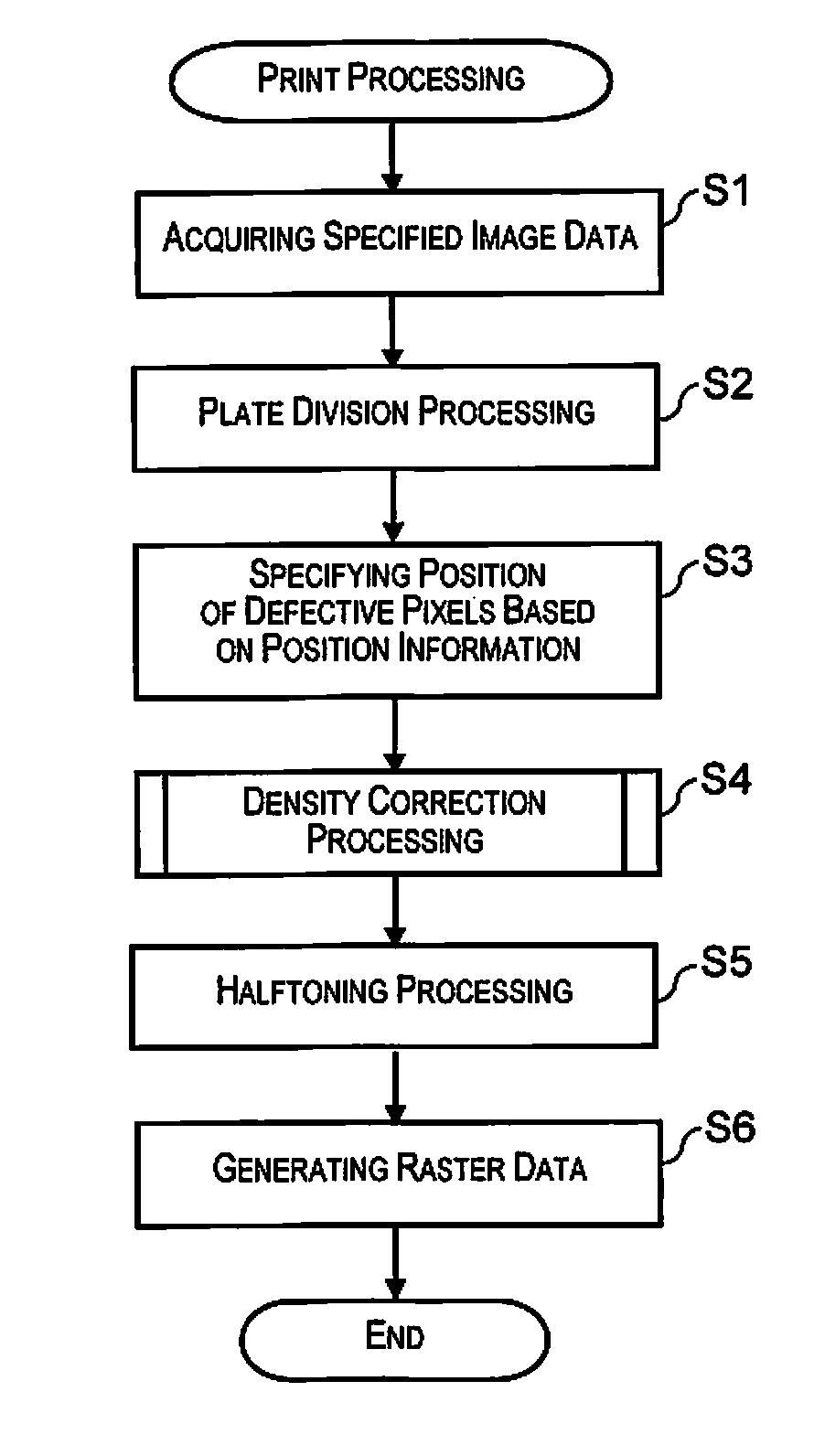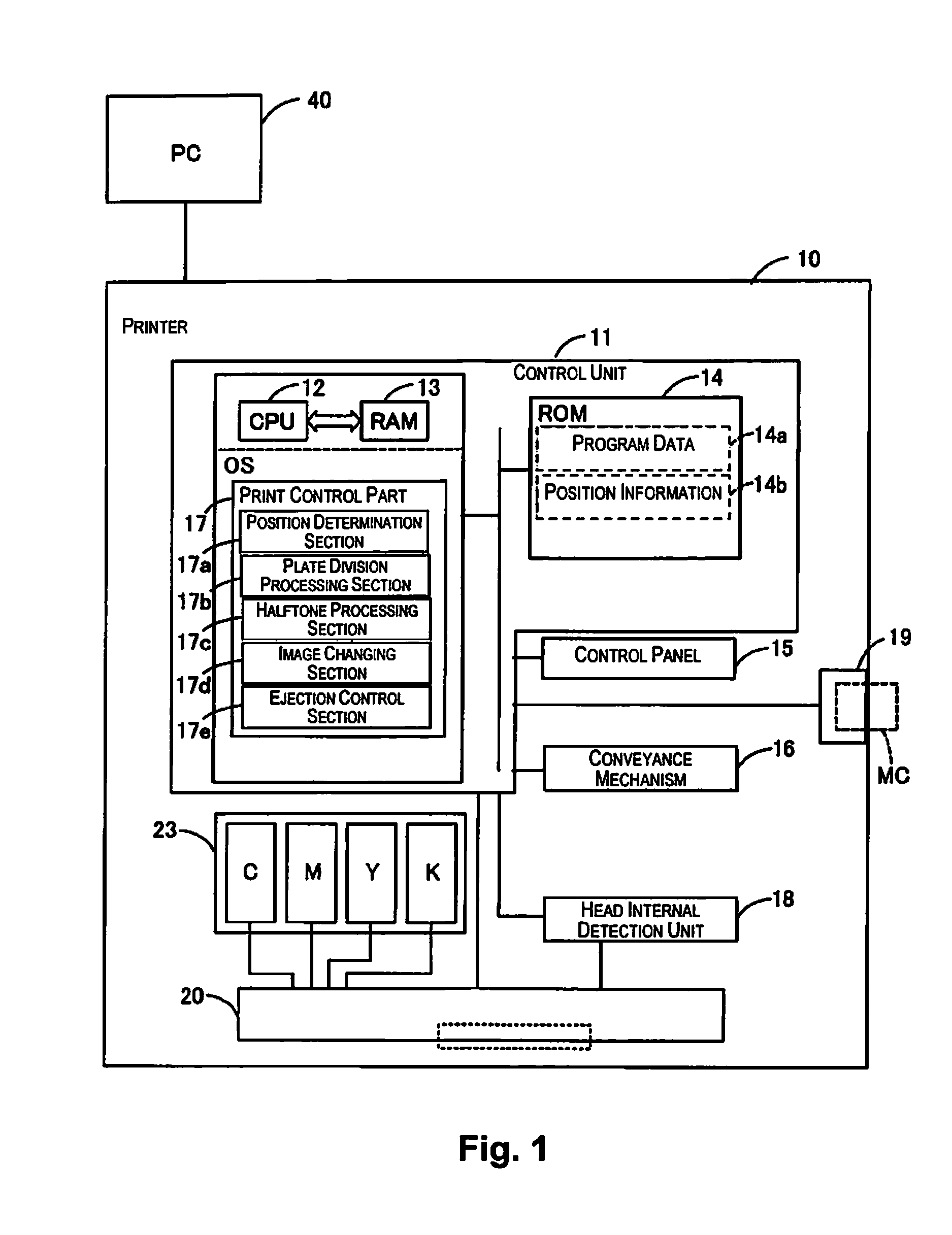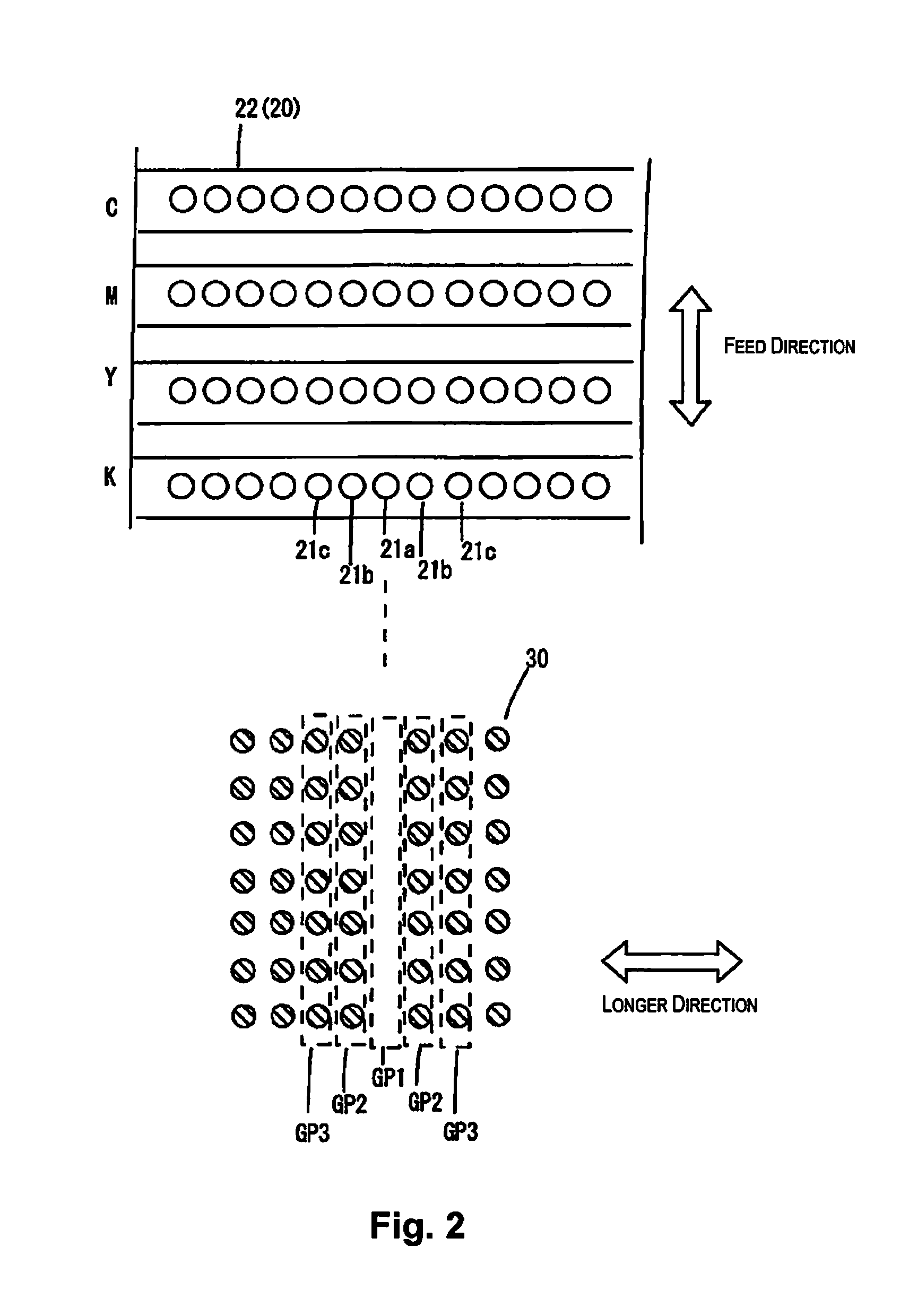Inkjet printer and printing method
a printing method and printer technology, applied in the direction of printing, other printing apparatus, etc., can solve the problems of deterioration of image, unsatisfactory, uneven density, etc., and achieve the effect of reducing the density of the third pixel, reducing the density of the halftone dots printed by the third pixel, and suppressing the unevenness of density
- Summary
- Abstract
- Description
- Claims
- Application Information
AI Technical Summary
Benefits of technology
Problems solved by technology
Method used
Image
Examples
first embodiment
1. FIRST EMBODIMENT
[0044]FIG. 1 schematically shows a hardware configuration and a software configuration according to the present embodiment. FIG. 2 exemplifies a part of each nozzle array in each of CMYK in an ejecting hole face 22 (surface that openings of a nozzle 21 are formed) of a print head 20, and dots on a print substrate printed by the nozzle arrays.
[0045]In FIG. 1, a PC (personal computer) 40 and a printer 10 are shown. The printer 10 corresponds to an inkjet printer. A system including the PC 40 and the printer 10 may be counted as a printing device or an inkjet printing. The printer 10 is provided with a control unit 11 to control a print processing. In the control unit 11, a CPU 12 executes a firmware to control the own device by developing program data 14a, which is stored in a ROM 14, etc., in a RAM 13 and performing operation in accordance with the program data 14a under the OS. The firmware is a program to execute functions of a print control section 17, etc. by t...
second embodiment
2. SECOND EMBODIMENT
[0126]Up to here, it was explained to presume that the printer 10 is provided with the print head 20 as a head for line-type printer. However, the printer 10 is provided with the print head 20 being movable in the scanning axis direction, which is defined in a direction intersecting with the aforementioned feed direction, and that is, it may be a serial printer.
[0127]FIG. 13 is a diagram showing the print head 20 as a head for serial printer.
[0128]In the print head 20, a nozzle array of each color of C, M, Y, K is provided with a plurality of nozzles 23 that is respectively arranged in the feed direction. Therefore, in the second embodiment, the fourth nozzles 23b, which are positioned adjacent to the defective nozzle 23a, are positioned adjacent to the defective nozzle 23a in the feed direction. Also, the fifth nozzles 23c, which are adjacent to the fourth nozzles 23b, are positioned in an opposite side of the defective nozzle 23a with respect to the fourth nozz...
modified example 1
[0130]The position information that the position determination section 17a acquires is not limited to the information supplied from the head internal detection unit 18. For example, a position of a nozzle, in which the defect ejection occurs, may be inputted as the position information by controlling the control panel 15 by the user. In this case, the user controls the printer 10 to print a solid image of each color of, for example, C, M, Y, K. The user observes the solid image and determines a pixel line in which the dot omission occurs. Based on the pixel line that was determined, the user controls the control panel 15 to input the position of the defective nozzle as the position information to the printer 10 so that it is possible that the printer 10 determines the position of the defective pixels P1.
[0131]With such configuration, even though the printer 10 is not provided with the head internal detection unit 18, the present invention can be applied.
[0132]Further, even though it...
PUM
 Login to View More
Login to View More Abstract
Description
Claims
Application Information
 Login to View More
Login to View More - R&D
- Intellectual Property
- Life Sciences
- Materials
- Tech Scout
- Unparalleled Data Quality
- Higher Quality Content
- 60% Fewer Hallucinations
Browse by: Latest US Patents, China's latest patents, Technical Efficacy Thesaurus, Application Domain, Technology Topic, Popular Technical Reports.
© 2025 PatSnap. All rights reserved.Legal|Privacy policy|Modern Slavery Act Transparency Statement|Sitemap|About US| Contact US: help@patsnap.com



